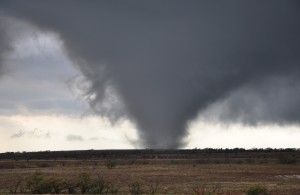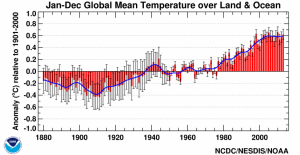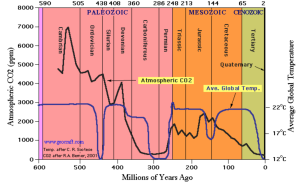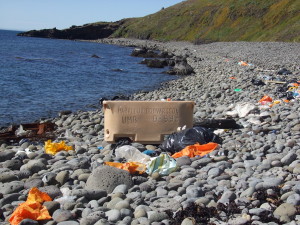American has been the central of farming for several years, thanks to the fertile soil found in the heartland of our country. Unfortunately, in recent years, big companies (mainly Monsanto) have been taking over the way we farm. This may be a stretch from the typical “environmental” issues post, but it nonetheless is an issue that involves our farmland and our health. With this is mind, I have decided to make a sort of “preview post” of my advocacy project. This project will essentially work to educate the general consumer body on Genetically Modified Organisms, and explain the power that purchasers have to control what we eat. Hopefully, in the near future, action will be taken by the consumer body to encourage the labelling of GMOs and discourage the oppression of our nation’s farms and farmers.
Traditionally, when we think of the American farm, the image that has been engrained into our heads by looking at th e “Farm Fresh” logo on tons of food packages. This picture of a classic farmer and farm that is painted by the industry is almost completely gone in today’s America. The reality is more of a big open field, a suppressed farmer, and tons of emission-realeasing machines that harvest all of our food. Why haven’t we done anything about this? Do we simply not care? No. The more likely reason is that we didn’t know. There has essentially been a “veil” dropped between the producer and consumer, to the point that we have no idea where most of our foo
e “Farm Fresh” logo on tons of food packages. This picture of a classic farmer and farm that is painted by the industry is almost completely gone in today’s America. The reality is more of a big open field, a suppressed farmer, and tons of emission-realeasing machines that harvest all of our food. Why haven’t we done anything about this? Do we simply not care? No. The more likely reason is that we didn’t know. There has essentially been a “veil” dropped between the producer and consumer, to the point that we have no idea where most of our foo d comes from. This is exactly the way these big overbearing companies like Monsanto want it, because an ignorant consumer is a big money maker. Well the solution seems simple, wouldn’t it just be easier to avoid Monsanto products all together, effectively improving our health by avoiding Genetically Modified Organisms (GMO). The answer isn’t that simple, mostly because we don’t actually know which products are GMO Monsanto products. Monsanto and associated companies have fought tooth and nail to prevent any GMO labeling laws from being passed in our country. They are essentially saying that they don’t want the American consumer, who is spending their money and their health on this product, to know what they are actually putting on their table. That isn’t to say that Monsanto’s current method hasn’t been fought. On May 8, 2014, Vermont finally passed their GMO labeling bill into law. The specifics of the bill state that all products containing Genetically Modified Organisms must be labeled as such by July 1, 2016. Vermont became the first state to successfully pass this bill, although several other states have been working on the bill. Naturally, Monsanto wasn’t going to go down without a fight, so they sued the state of Vermont in a lawsuit costing millions of dollars and is still continuing today. Several other state, such as Maine, have passed laws that state that they will continue with GMO labeling when their neighboring states do. The purpose of this is to essentially ensure that what is happening to Vermont doesn’t happen to them, and if it does they will have the support of neighboring states to aid in their legal battle. Vermont is essentially fighting this battle by themselves, due to the fact that their law does not depend on other states. However, as legal analysts predict that Vermont will win, we can look forward to seeing more states follow their lead. On the other hand, tons of states have a proposed bill for GMO labelling in the governmental works, but most have been shot down by the conveniently placed Monsanto ex-employees that litter our government. Thanks to these governmental ties, Monsanto has officially been above the law since Obama signed “The Monsanto Protection Act,” stating that federal courts cannot in any way stem the sale and production of GMO seeds, no matter what health risks may come into light.
d comes from. This is exactly the way these big overbearing companies like Monsanto want it, because an ignorant consumer is a big money maker. Well the solution seems simple, wouldn’t it just be easier to avoid Monsanto products all together, effectively improving our health by avoiding Genetically Modified Organisms (GMO). The answer isn’t that simple, mostly because we don’t actually know which products are GMO Monsanto products. Monsanto and associated companies have fought tooth and nail to prevent any GMO labeling laws from being passed in our country. They are essentially saying that they don’t want the American consumer, who is spending their money and their health on this product, to know what they are actually putting on their table. That isn’t to say that Monsanto’s current method hasn’t been fought. On May 8, 2014, Vermont finally passed their GMO labeling bill into law. The specifics of the bill state that all products containing Genetically Modified Organisms must be labeled as such by July 1, 2016. Vermont became the first state to successfully pass this bill, although several other states have been working on the bill. Naturally, Monsanto wasn’t going to go down without a fight, so they sued the state of Vermont in a lawsuit costing millions of dollars and is still continuing today. Several other state, such as Maine, have passed laws that state that they will continue with GMO labeling when their neighboring states do. The purpose of this is to essentially ensure that what is happening to Vermont doesn’t happen to them, and if it does they will have the support of neighboring states to aid in their legal battle. Vermont is essentially fighting this battle by themselves, due to the fact that their law does not depend on other states. However, as legal analysts predict that Vermont will win, we can look forward to seeing more states follow their lead. On the other hand, tons of states have a proposed bill for GMO labelling in the governmental works, but most have been shot down by the conveniently placed Monsanto ex-employees that litter our government. Thanks to these governmental ties, Monsanto has officially been above the law since Obama signed “The Monsanto Protection Act,” stating that federal courts cannot in any way stem the sale and production of GMO seeds, no matter what health risks may come into light.
While our government has the important job of ensuring our safety, we also have the quintessential role of controlling what we consume. If we look into a food market, we as consumers might seem powerless, we are simply able to by what is in front of us, so how could we have any power? Well let me ask this, what if we all stopped buying anything? Companies would go out of business; we are their source of revenue, and they know that. Sure we aren’t just going to stop going to our local Giant and magically come up with another food source, but we can control what we buy while at the supermarket. By picking and choosing exactly what we buy at the supermarket, and having an important reason backing up our choices, we control our economy. An educated and aware consumer is a danger to the very foundation of fear, mystery, and domination that Monsanto has built up over the years. It is super easy to find a list of companies that use Monsanto products online (seriously just type in “Monsanto is Evil” into Google and it will come up). Thousand upon hundreds of consumers have decided to boycott the company, effectively sending the message that they do not approve. Here is a list of the companies:  Trust me, I know that as consumers it is difficult for us to change what we eat. In fact, after seeing the list, I was extremely upset to find that my favorite Fruit & Nut granola bars contained Monsanto products. It’s not always easy to take a stand, but in the end, it is worth it for the future of our farmers and our health. In fact, more and more celebrity figures are taking a stand against what may be the most hated company in America. Neil Young has dedicated a album, The Monsanto Years, to the oppression that the company has over America. In the end, our state governments has to follow the example of Vermont, and us as consumers have to educate ourselves and realize that we have an extreme amount of power over our economy.
Trust me, I know that as consumers it is difficult for us to change what we eat. In fact, after seeing the list, I was extremely upset to find that my favorite Fruit & Nut granola bars contained Monsanto products. It’s not always easy to take a stand, but in the end, it is worth it for the future of our farmers and our health. In fact, more and more celebrity figures are taking a stand against what may be the most hated company in America. Neil Young has dedicated a album, The Monsanto Years, to the oppression that the company has over America. In the end, our state governments has to follow the example of Vermont, and us as consumers have to educate ourselves and realize that we have an extreme amount of power over our economy.
To learn more about Monsanto and their oppression of farmers and our food source, check out the following links:
1.) The movie Food, Inc. is a great source to look at to gain basic knowledge.
2.) Monsanto’s bogus- echem, I mean “carefully worded”- response to the Food, Inc. movie.
3.) Pennsylvania‘s current stance on GMO labeling.












